
The workplace is changing as a result of the needs and goals of both employers and employees. On one side is the pressure to cut costs and make spaces smaller. On the other side are the people who want to have feel-good spaces. According to JLL's Global Research Study, 69% of workers agree that a sense of happiness is an essential ingredient to a unique human experience within an organization. As businesses increasingly realize the value of attracting and retaining top talent, there's been a movement to create a more human-centric workplace.
When thinking about reimagining your office space, using a human-centered approach can help you reshape your workspace to meet the needs of the people. It's a concept based on not only productivity but also the well-being and comfort of employees. Building on the idea to promote collaboration and innovation in recent years, human-centered design takes it a step further to create an environment where employees feel energized, inspired and happy.
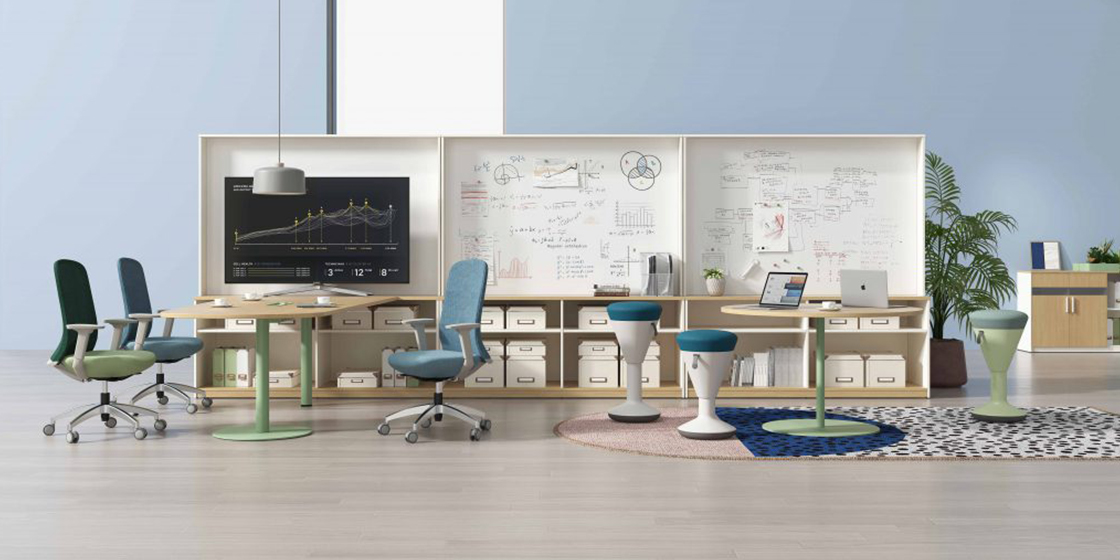
Human-Centered Design
Human-centered design (HCD) is a creative approach to problem-solving pioneered by the design firm IDEO. HCD has been used implicitly in design and product development. Design Thinking is a method popularized by design firm IDEO and its educational cousin, the d.school at Stanford University. Design Thinking is essentially a form of branded HCD, focused on empathy informed problem-solving.
Human-centered design consists of three stages. The questions provided at each stage are guidelines for how designers can think when designing a human-centric workplace.
Inspiration: Observing the workplace
Ideation: What design enables employee productivity and well-being
Implementation: Bringing the idea and design to life
Hip Chair by Sunon
Designed by Alegre Design and Winner of Gold A'Design Award, Hip is a perfect example of a Human-centered design process.
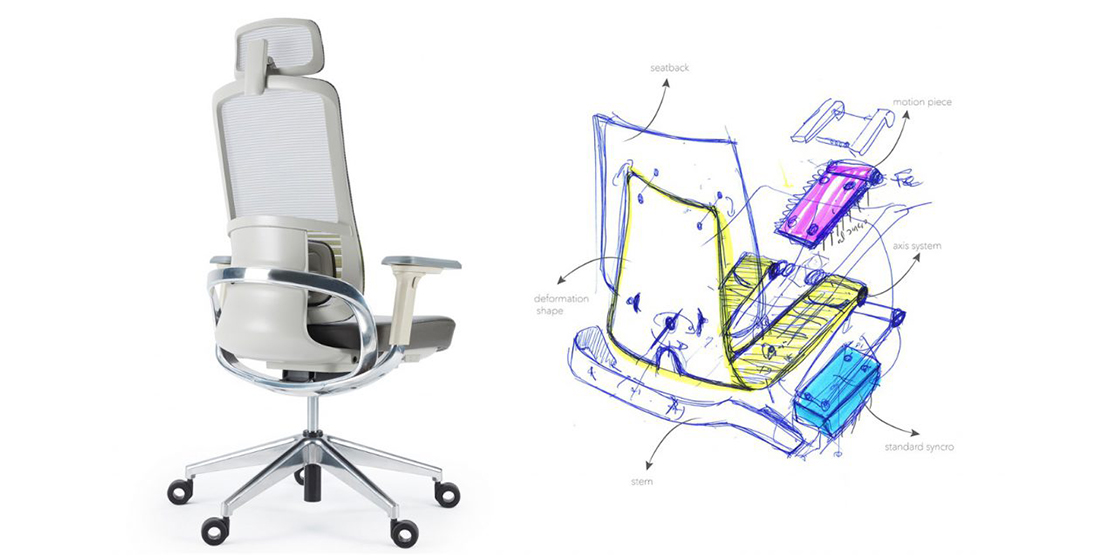
Its design, that maximized comfort and ergonomics, allows the back of the chair to adapt to the movement of the hips, thanks to having a structure that accommodates the body's movement and an innovative synchronized system. A chair designed keeping human comfort at the center of the design process.
3 Core Human needs at a workplace
Today some of the most forward-looking companies are engaging employees by designing environments that address three core human needs—physical, emotional and mental; the same factors often evaluated in human-centered product design.
Physical
The furniture in space should fit a broad range of users in the best way possible. Furniture designed with the human form in mind can increase comfort for users and reduce or eradicate repetitive stress injuries. Spaces that encourage movement throughout the day, such as an office with stairs and social spaces, can actually improve the health of sedentary workers.
Emotional
Our feelings have a strong influence on our behavior and space undoubtedly affects emotions. If a space feels warm, quirky, social, and inviting, employees will be excited to come to the office and new talent would want to work there. When space aligns with company values, brand, and mission it creates a sense of purpose and emotional connection.
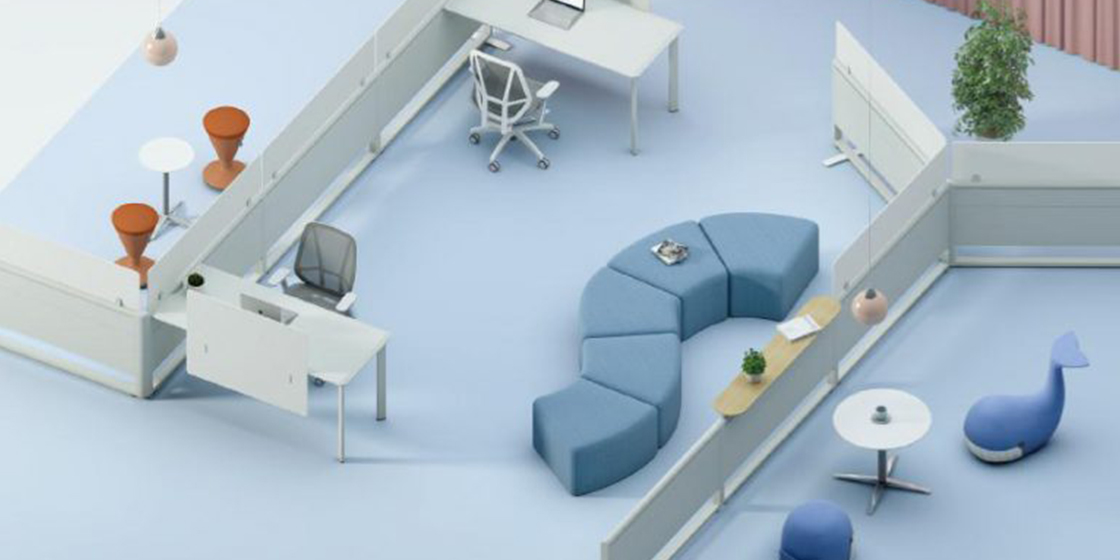
Mental
When designed with our cognitive processes in mind, workspaces can enhance our focus, creativity, collaboration, and retention. One example is the open office space, offering collaboration and social interactions. On the downside, open office spaces are also notorious for being noisy and not suitable for focused individual work.
A solution that has risen to popularity in recent years has been to create spaces for temporary privacy. This diversity of space types allows for both focus and collaboration, based on the task at hand.
5 Key steps for a Human-centred workspace
People positively respond when the environment focuses on their core needs. The following human-centered design elements and ideas add value to the office environment.
Community
Collaborative furniture and social spaces let us connect and build relationships. We brainstorm, get to know one another and feel like we're invested in one another's lives. A sense of community at work breeds trust in our employer and our colleagues.
Ergonomics
Adjustable height desks and Ergonomic chairs are the tools our bodies need to stay healthy on the job. Whether we are sitting down or standing up, product performance is key to employee satisfaction. These solutions help employers and employees, to foster a healthy, productive, and ergonomic working environment.
Click here to know more about ergonomic furniture and its benefits.
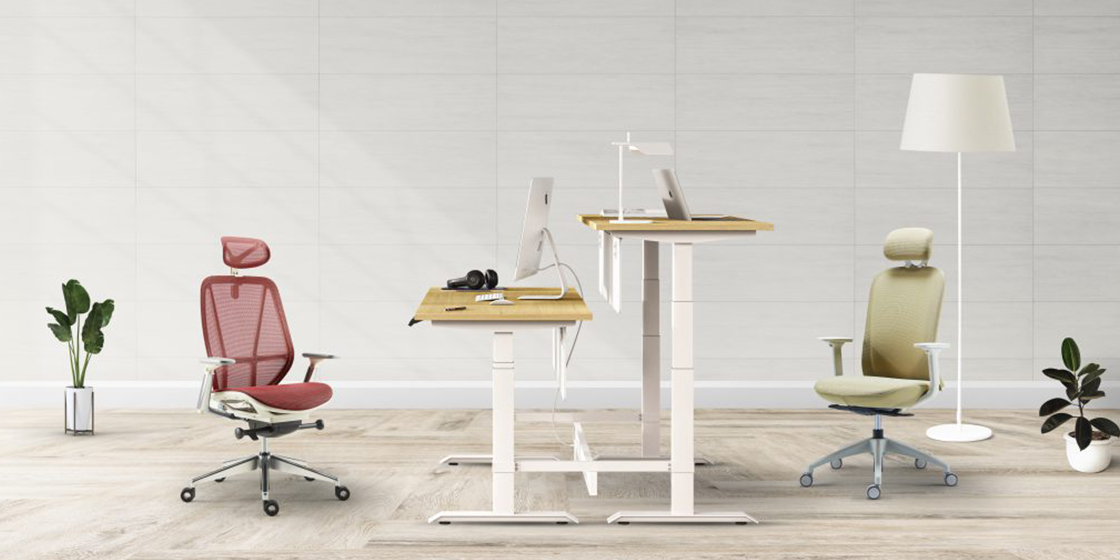
Sunon New Collection: H'up chair, UP1 height adjustable desk, Aveza chair
Choices
Allow employees the opportunity to work where they will do their best and have different choices of spaces. Ideas here run the gamut from breakout areas, focus areas, gyms, meditation areas, outdoor space and game rooms to using colors known to improve mood, creating access to more natural light, and incorporating ambient lighting options.
Biophilia
Bring plants into the workplace. Humans crave biophilia as it helps reduce stress. Greenery also livens up the workplace and makes it look more attractive. Weaving the forms, textures, and patterns of nature into the workspace fits beautifully into the human-centered concept.
Acoustics and Privacy
Not everyone works well with music or excessive talking. Some of us need the sound of silence to focus. Furniture with acoustical and visual privacy will create a happy working office that can still be interactive and collaborative. It can also have a positive influence on an employee's morale.
Learn more about Privacy options: Click here
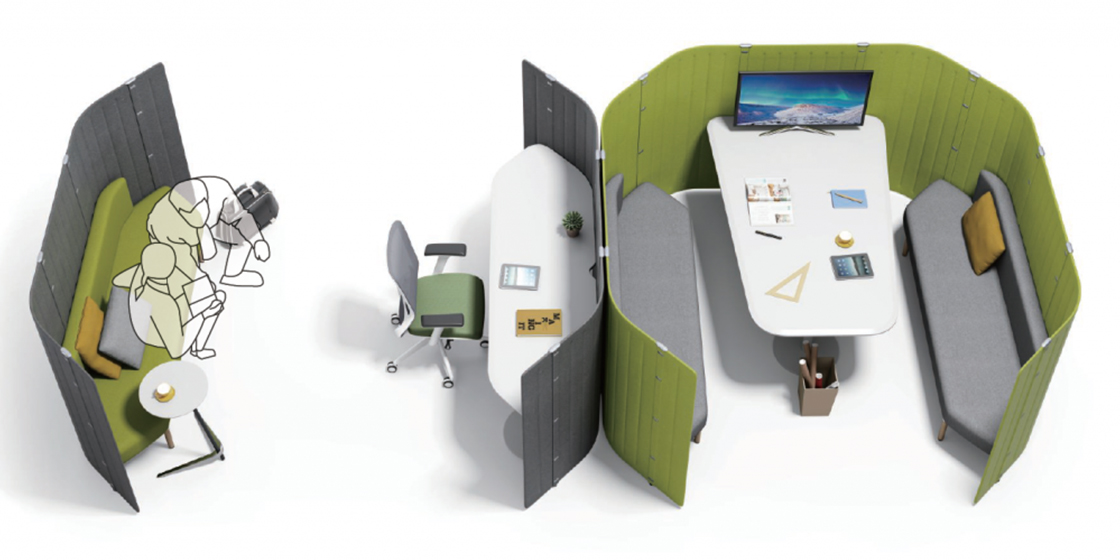
Hyle series with acoustic screens
Putting People First
A workspace should work for people. At the heart of every business are the people who make it work. The most productive work environment is created by employers who listen to employees and that's the basis of human-centered design. Let's create workspaces, thinking about the spaces a little less and the people we are designing for a little more.